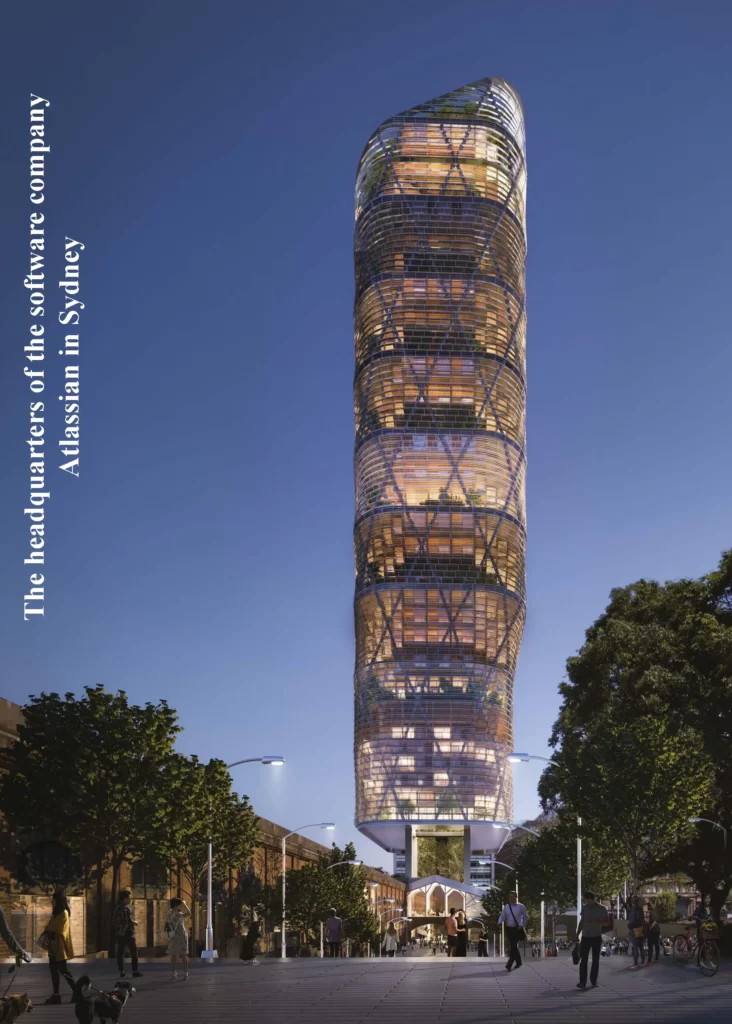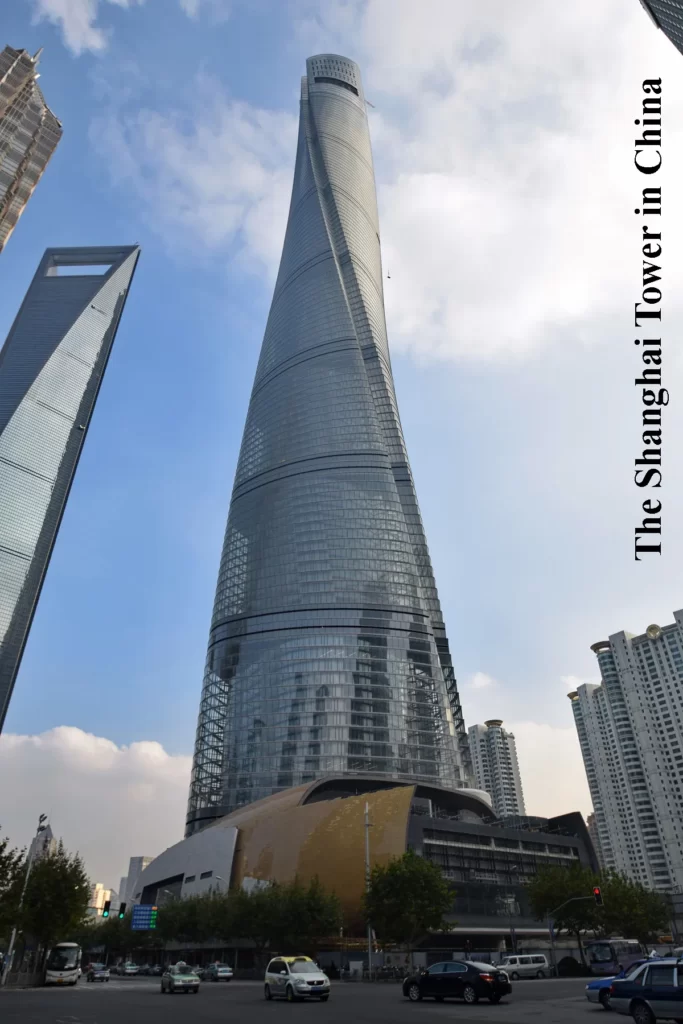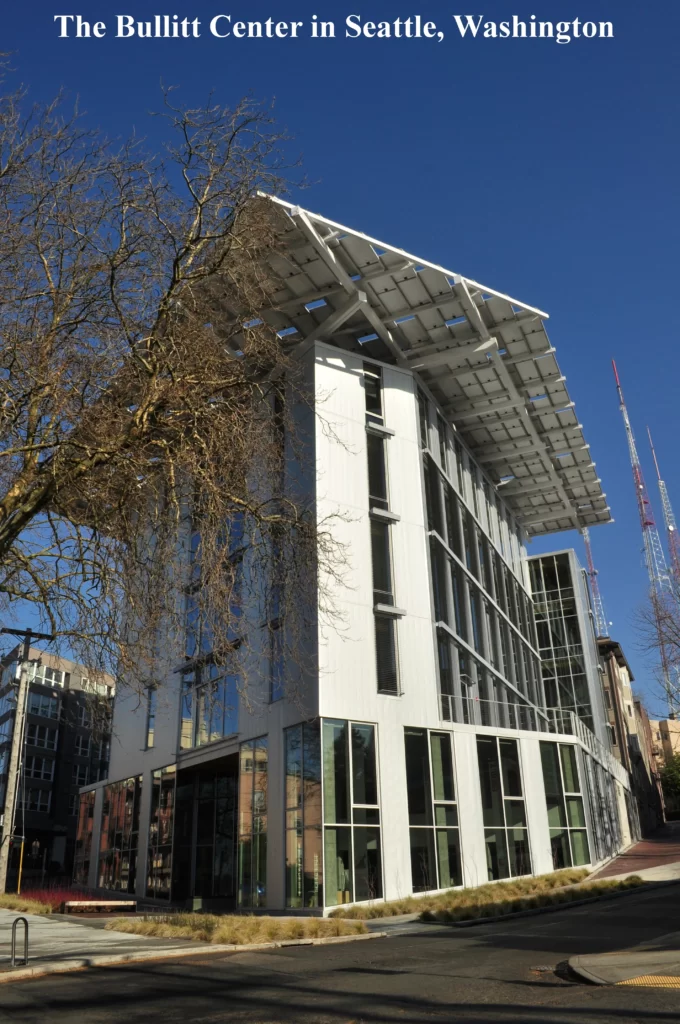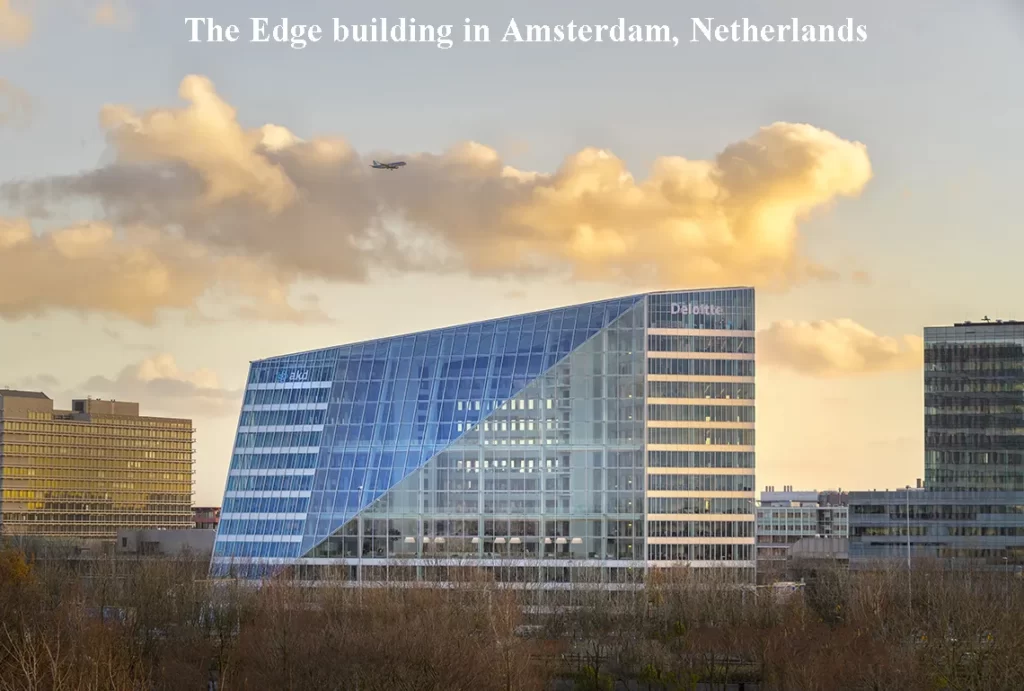If you want to know about the staircase design or landscape garden or requirements for disabled persons in a building, please click the link.
Introduction
Office building design in architecture refers to the process of designing and planning buildings that are specifically intended for use as office spaces. The design of an office building typically takes into consideration factors such as the intended use of the building, the number of employees it will house, and the need for various amenities and features such as meeting rooms, break rooms, and storage areas.

Importance of office building design in architecture
The design of an office building is important for several reasons. First, a well-designed office building can have a positive impact on the productivity, health, and wellbeing of the people who work in it. It can also help to attract and retain employees, as well as impress clients and visitors.
Additionally, a well-designed office building can be more energy-efficient and sustainable, which can help to reduce operating costs and minimize the building’s environmental impact.
Brief history of office building design in architecture
Office building design has evolved over time in response to changing economic, social, and technological conditions. Early office buildings were often designed as large, utilitarian structures with open floor plans and minimal ornamentation.
However, as the importance of office work increased and office buildings became more common, architects began to experiment with new styles and designs, incorporating features such as air conditioning, elevators, and atriums.
Today, office building design continues to evolve, with architects exploring new technologies and design strategies to create buildings that are more efficient, sustainable, and functional.
1) Functionality in Office Building Design
i) Importance of functionality in office building design
Functionality is a critical aspect of office building design as it directly impacts the efficiency, productivity, and comfort of the building’s occupants. An office building that is well-designed for functionality can help to maximize the use of space, minimize disruptions to work, and create a comfortable and productive environment for employees.
ii) The role of functionality in the design process
The design process for an office building must consider the functional needs of the building’s occupants. Architects must work with clients to understand the specific requirements of the space, such as the number of employees, the nature of the work being done, and the need for collaboration and privacy. Based on these needs, architects can create a design that optimizes the layout, circulation, and accessibility of the space.
iii) Examples of functional office building designs
There are several examples of functional office building designs that have been successful in meeting the needs of their occupants.
- One example is the Pixar Animation Studios in Emeryville, California, which features a central atrium that promotes collaboration and communication among employees. The building also includes various amenities such as a gym, a cafe, and outdoor spaces for relaxation and inspiration.

- Another example is the headquarters of the software company Atlassian in Sydney, Australia, which includes open-plan workspaces, soundproof phone booths for private conversations, and breakout areas for meetings and collaboration. The building also includes a variety of sustainable features such as a green roof, solar panels, and rainwater harvesting.

- Lastly, the Google Campus in Mountain View, California, is a complex of several buildings designed to promote innovation, collaboration, and productivity. The buildings include various features such as indoor and outdoor meeting spaces, recreational areas, and a range of amenities such as cafes, shops, and fitness facilities. The design of the buildings encourages movement and interaction among employees, with the aim of fostering creativity and innovation.

2) Aesthetics in Office Building Design
i) Importance of aesthetics in office building design
The aesthetic design of an office building is important for several reasons. A well-designed office building can enhance the brand image of the company and make a positive impression on clients, visitors, and potential employees. It can also contribute to the sense of pride and identity of the building’s occupants and create a more pleasant and stimulating work environment.
ii) The role of aesthetics in the design process
Aesthetics play an important role in the design process for an office building. Architects must work with clients to understand the desired image and values of the company and incorporate these into the design. They must also consider the surrounding environment and how the building will fit into its context. The design of an office building must strike a balance between form and function, ensuring that it is not only aesthetically pleasing but also functional and practical.
iii) Examples of aesthetically pleasing office building designs
There are several examples of aesthetically pleasing office building designs that have been successful in creating a positive impression on their occupants and visitors.
- One example is the Hearst Tower in New York City, which features a distinctive triangular shape and a façade made of glass and steel. The building is not only visually striking but also incorporates sustainable features such as rainwater harvesting and a natural ventilation system.

- Another example is the Apple Park campus in Cupertino, California, which features a circular design and a large park-like space with trees, walking paths, and outdoor seating areas. The design of the campus is intended to foster collaboration and creativity among employees while also being visually impressive and environmentally sustainable.

- Lastly, the Shanghai Tower in China is an example of a building that combines aesthetic design with sustainability and functionality. The tower features a unique twisted design that reduces wind loads and improves energy efficiency. It also incorporates various sustainable features such as rainwater harvesting, solar panels, and a high-efficiency heating and cooling system. The design of the building is not only visually impressive but also practical and sustainable.

3) Sustainability in Office Building Design
i) Importance of sustainability in office building design
Sustainability is a critical aspect of office building design as it contributes to the well-being of the environment and the health and productivity of building occupants. Sustainable office building design can reduce energy and water consumption, minimize waste, and promote the use of renewable materials. It can also improve indoor air quality and create a healthier and more comfortable work environment for employees.
ii) The role of sustainability in the design process
Sustainability plays a crucial role in the design process for an office building. Architects must work with clients to understand their sustainability goals and incorporate these into the design. They must also consider the surrounding environment and how the building can reduce its impact on the environment. The design of an office building must consider a range of sustainability factors, including energy efficiency, water conservation, use of renewable materials, and indoor air quality.
iii) Examples of sustainable office building designs
There are several examples of sustainable office building designs that have been successful in reducing their environmental impact while providing a healthy and productive work environment.
- One example is the Bank of America Tower in New York City, which features a range of sustainable features such as a rainwater harvesting system, a high-efficiency HVAC system, and a green roof. The building also uses low-emitting materials to improve indoor air quality and incorporates a range of energy-saving measures such as LED lighting and occupancy sensors.

- Another example is the Bullitt Center in Seattle, Washington, which is one of the most sustainable office buildings in the world. The building generates its own electricity from solar panels and geothermal wells and uses rainwater for all its water needs. The building is made of non-toxic materials and incorporates natural ventilation and daylighting to improve indoor air quality and reduce energy consumption.

- Lastly, the Edge building in Amsterdam, Netherlands, is an example of a sustainable office building that incorporates advanced technologies to optimize energy efficiency and occupant comfort. The building uses solar panels, a geothermal system, and a rainwater collection system to minimize its environmental impact. It also uses sensors to optimize lighting, temperature, and air quality based on occupancy patterns, improving the productivity and comfort of building occupants.

4) Technology in Office Building Design
i) Importance of technology in office building design
Technology is a crucial aspect of modern office building design as it can improve the functionality, sustainability, and overall user experience of the building. Technological advancements can provide solutions for building automation, energy efficiency, security, and communication. It can also create a more enjoyable and convenient experience for building occupants and visitors.
ii) The role of technology in the design process
Technology plays a significant role in the design process for an office building. Architects must consider the latest technological advancements and how they can be incorporated into the design to improve the functionality, sustainability, and user experience of the building. They must also work with clients to understand their technology needs and incorporate these into the design.
iii) Examples of technologically advanced office building designs
There are several examples of technologically advanced office building designs that have been successful in improving the functionality, sustainability, and overall user experience of the building.
- One example is the Deloitte Head Office in Amsterdam, Netherlands, which features a range of advanced technologies such as smart lighting, climate control, and security systems. The building uses an app to control lighting and temperature, which adjusts automatically based on the number of people in a room. It also uses rainwater harvesting and solar panels to minimize its environmental impact.

- Another example is the Crystal in London, United Kingdom, which is a sustainable office building that features a range of advanced technologies such as interactive displays, smart building controls, and renewable energy sources. The building uses real-time data to optimize lighting, heating, and cooling, reducing energy consumption. It also uses rainwater harvesting and solar panels to generate renewable energy and minimize its environmental impact.

- Lastly, the Edge Olympic in Amsterdam, Netherlands, is an example of a technologically advanced office building that uses advanced sensors and technologies to improve energy efficiency, user experience, and sustainability. The building uses a range of technologies such as facial recognition, occupancy sensors, and building management systems to optimize lighting, temperature, and air quality based on user preferences and occupancy patterns. It also uses solar panels, a rainwater collection system, and a geothermal system to generate renewable energy and reduce its environmental impact.

5) Conclusion
- Office building design in architecture encompasses a range of factors, including functionality, aesthetics, sustainability, and technology.
- Functionality plays a critical role in office building design as it determines how well the building can meet the needs of its occupants and perform its intended functions.
- Aesthetics are also essential in office building design as they can impact the overall perception of the building and its occupants.
- Sustainability is increasingly important in office building design as it can reduce the building’s environmental impact and promote the health and productivity of building occupants.
- Technology is also becoming increasingly critical in office building design as it can improve the functionality, sustainability, and overall user experience of the building.
Future trends in office building design in architecture
- The use of biophilic design, which incorporates natural elements such as plants and natural light to improve the health and well-being of building occupants.
- The adoption of modular construction techniques, which can reduce construction time and costs while improving sustainability.
- The integration of augmented reality (AR) and virtual reality (VR) technologies to provide immersive experiences for building occupants and help them visualize the design before construction.
- The use of smart building technologies to optimize energy efficiency, security, and user experience.
- The incorporation of flexible and adaptable spaces that can accommodate changing work patterns and the needs of different types of workers.